Never one to shy away from the realities of human suffering, Käthe Kollwitz used her art to document the impact of the turbulence and wars that dominated German life during the first half of the 20th century. This exhibition presents prints and drawings selected from the Dr. Richard A. Simms collection, which entered the holdings of the Getty Research Institute in 2016. Find out more from the Getty’s website.
Preview the exhibition below | View Apollo’s Art Diary here
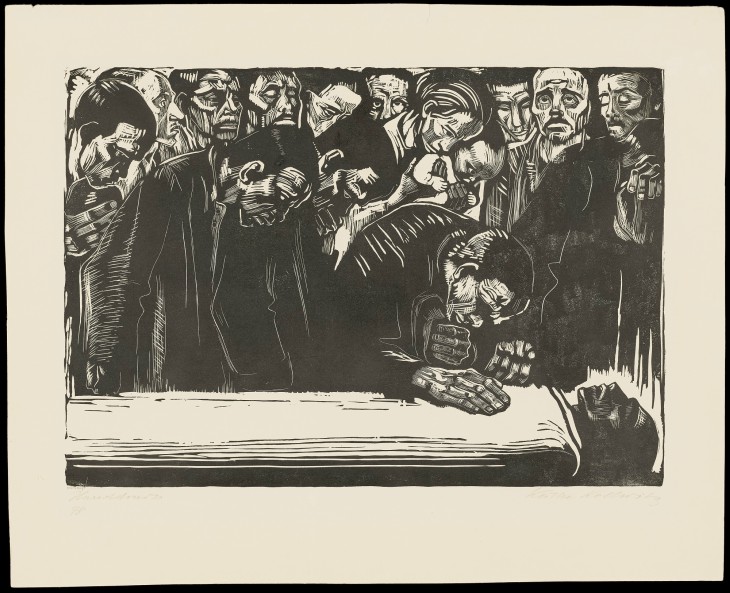
In Memoriam Karl Liebknecht (1920), Käthe Kollwitz. Photo: © 2019 Artists Rights Society (ARS), New York
Kollwitz was greatly disturbed by the news in January 1919 that the Communist leader Karl Liebknecht had been assassinated together with Rosa Luxembourg by the paramilitary Freikorps. Their deaths triggered a wave of public mourning, reflected here in Kollwitz’s depiction of the weeping crowds around Liebknecht’s deathbed.
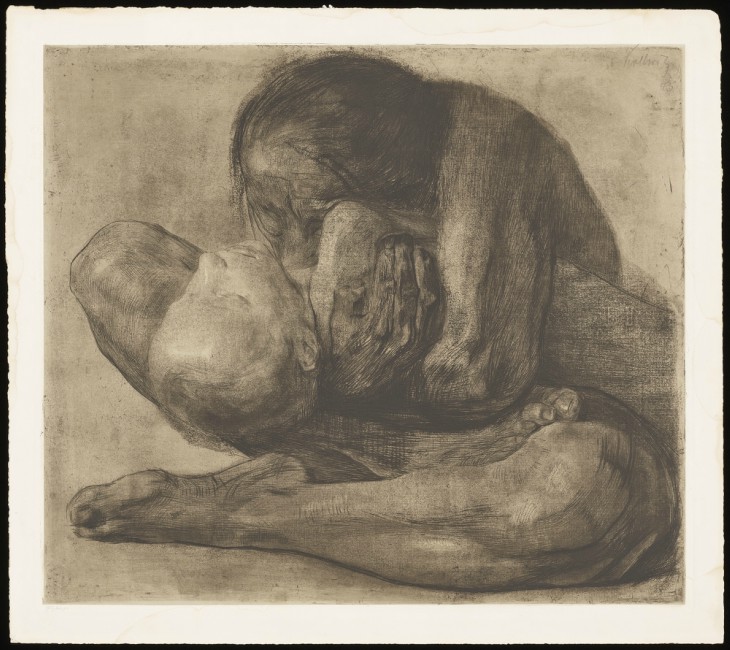
Woman with Dead Child (1903), Käthe Kollwitz. Photo: © 2019 Artists Rights Society (ARS), New York
Kollwitz is particularly celebrated for her monumental figurative sculptures; these find an echo in this drawing of two bodies entwined into one solid mass. Multiple versions reveal that the artist carefully fine-tuned her study of a mother’s love devastated by grief.
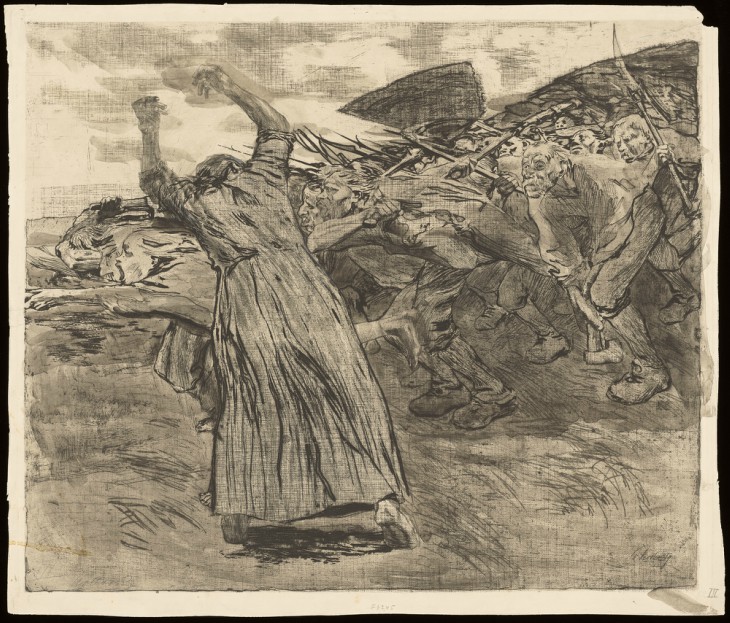
Charge (1902–03), Käthe Kollwitz. Photo: © 2019 Artists Rights Society (ARS), New York
One of seven prints in the series ‘Peasants’ War’ (1902–08), this work thrums with the energy of a charging mob, which is apparently being conducted by the peasant woman in the foreground. The figure was inspired by Black Anna, a real-life participant of a peasant revolt in 1525, which Kollwitz read about in Wilhelm Zimmerman’s General History of the Great Peasants’ War (1841).
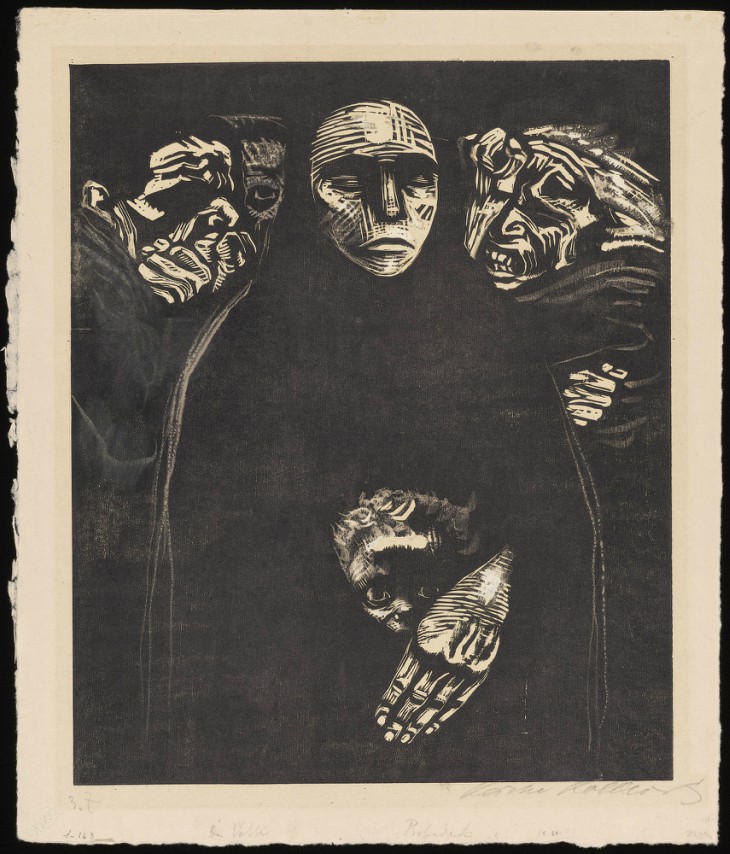
The People (1922), Käthe Kollwitz. Photo: © 2019 Artists Rights Society (ARS), New York
Kollwitz’s son Peter died on the battlefield in 1914, a loss that shaped her pacifist views. A wide-ranging look at how the Great War affected both its soldiers and those left behind, ‘War’ (1918–1922/23) was Kollwitz’s first series of woodcuts. This work foregrounds a single shrouded woman, eerily skeletal and still, as she shields a young child from the nightmarish figures that surround them.
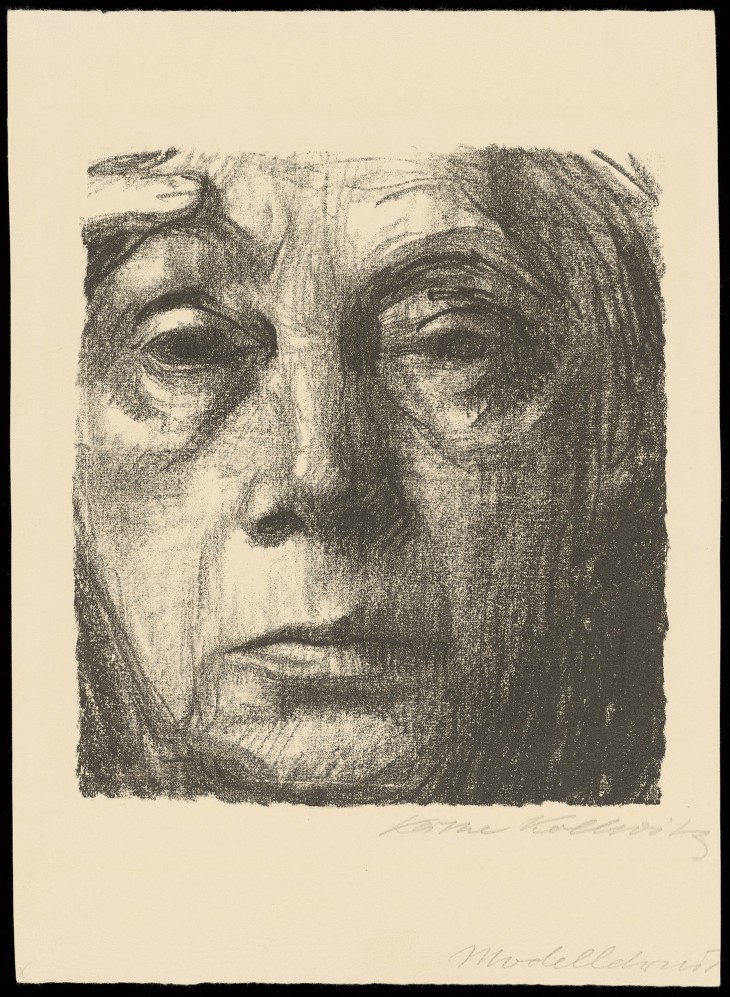
Self-Portrait (1934), Käthe Kollwitz. Photo: © 2019 Artists Rights Society (ARS), New York
Kollwitz produced many self-portraits, and this example from towards the end of her life evinces not just the surface signs of ageing but also the serious, resolved demeanour of a woman who has spent several decades dwelling on the darkest aspects of human experience.

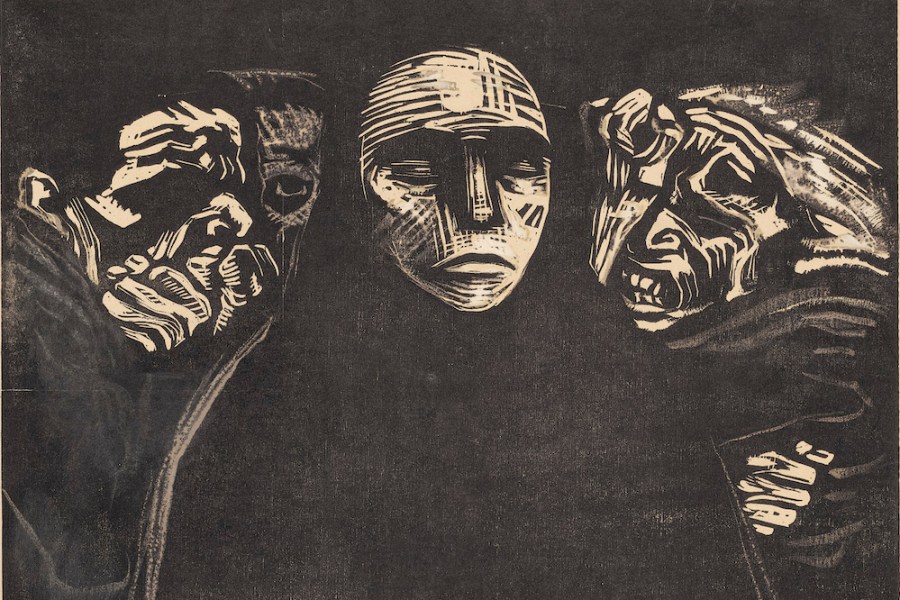









![Masterpiece [Re]discovery 2022. Photo: Ben Fisher Photography, courtesy of Masterpiece London](http://www.apollo-magazine.com/wp-content/uploads/2022/07/MPL2022_4263.jpg)
Suzanne Treister’s tarot offers humanity a new toolbox